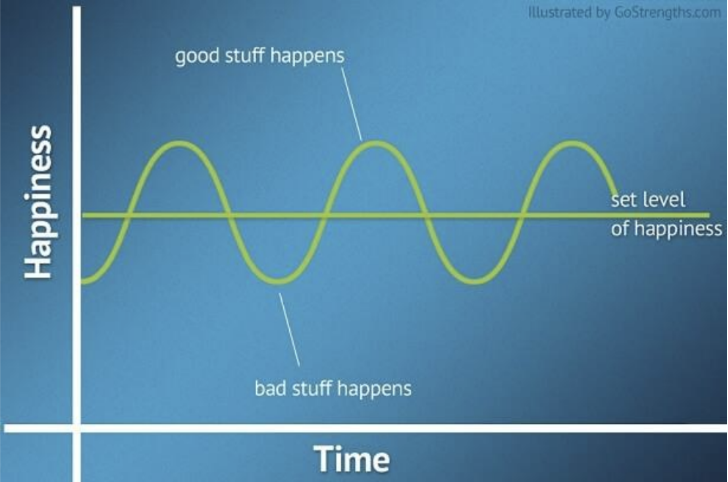Psych 101 - Unit 10 : Emotion and Well-Being
1/12
There's no tags or description
Looks like no tags are added yet.
Name | Mastery | Learn | Test | Matching | Spaced |
|---|
No study sessions yet.
13 Terms
What is Emotion
A complex psychological event that involves a mixture of
reactions: (1) a physiological response (usually arousal), (2)
an expressive reaction (distinctive facial expression, body
posture, or vocalization), and (3) some kind of subjective
experience(internal thoughts and feelings)”
Initial response to emotion
Amygdala
Rapid response to emotionally arousing stimuli (less than a second - 105 ms)
Especially aversive/fear-inducing stimuli
Threat detector (snake, bad odour, scary face)
Sends information to outer brain areas for more complex responding
Theory of Emotion - Subjective experience
Cognitive experience comes before physiological arousal
We subjectively experience an emotion (fear) and this causes bodily arousal (trembling)

Theory of Emotion - James-Lange Theory
Physiological arousal comes before conscious experience
First experience physiological arousal (trembling) and this causes the subjective emotion (fear)
BUT more emotions than physiological triggers

Theory of Emotion - Cannon-Bard Theory
Physiological arousal and conscious experience happen simultaneously
Stimulus activates both the body (trembling) and the cortex (fear); not casual, correlational
BUT emotional experience is affected by physiological arousal

Theory of Emotion - Schacter-Singer
Initial physiological arousal is interpreted, leading to conscious experience
First we have a physical response (trembling) we interpret that response (this is dangerous), leading to subjective emotion (fear)
Context and expectation are very important!

Misattribution of Arousal
Dutton & Aron (1974)
crossing a high bridge, and have an attractive tour guide
crossing a low bridge, and have the same attractive tour guide
The men crossing the high bridge were more likely to call the tour guide, misattributing the feeling of “fear” (racing heart, increased arousal) as the feeling of attraction
could be the reason why gym crushes are so popular
Expressing Emotion
6 emotions seem to be universal:
fear
happiness
disgust
anger
surprise
sadness
Though we seem to have non-verbal “accents” (Marsh et al., 2003)
found people with no contact with outside world and found consistent results
(Ekman & Friesen, 1971, 1975
Culture, Emotion and Display Rules
Western cultures tend to express more ego-focused emotions
Eastern cultures tend to express more other-focused emotions
Display Rules: unwritten expectations for when it is appropriate to show an emotion
North Americans blush, look away when embarrassed (hide and seem small - like you’ve done something wrong)
Japanese smile (trying not to show embarrassment - hide emotion b/c it shouldn’t be about yourself)
Kitayama Mesquita & Karasawa, 2006
What is Happiness?
Aristotle: Happiness as virtue (living a good and virtuous life)
Happiness as “psychological well-being)
Satisfaction of basic needs
Autonomy, environmental mastery, personal growth, positive relations, purpose, self-acceptance (Carol Ryff)
Happiness as “subjective well-being”
Positive affect
Negative affect
Life satisfaction
(Diener, 1984)
What determines Happiness?
Set Point: Genetically-determined biological predisposition for happiness
Happiness is about 50% heritable (genetic)
40% Intentional Behaviour
10% Circumstances
Hedonic Adaptation:
Tendency to return to a relatively stable level of happiness
Hedonic treadmill

Importance of hemispheric frontal lobe activity
Greater left-sided activity associated with approach motivation, positive appraisal, expected reward, positive emotion
Babies with dominant right prefrontal cortex more distressed by separation
Adults with dominant left prefrontal cortex are happier
Therefore, happiness being a choice is not entirely true
How to be happier
Change your brain (Haidt, 2006)
Meditation
Cognitive therapy
Medication (Prozac)
Happiness-boosting activities (Lyubomirsky, 2005)
How we think (optimism, gratitude)
What we pay attention to (savouring)
Our social relationships (nurturing relationships, acts of kindness)
What we work towards (goal commitment)